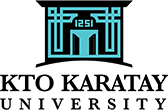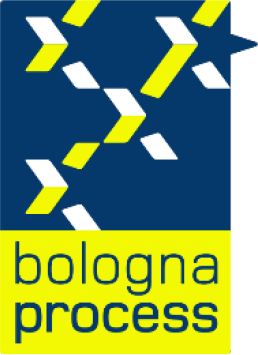Medical Imaging Techniques
Course Details

KTO KARATAY UNIVERSITY
Vocational School of Medical Services
Programme of Medical Imaging Techniques
Course Details
Vocational School of Medical Services
Programme of Medical Imaging Techniques
Course Details

| Course Code | Course Name | Year | Period | Semester | T+A+L | Credit | ECTS |
|---|---|---|---|---|---|---|---|
| 99401022 | Health Literacy | 1 | Autumn | 1 | 2+0+0 | 3 | 3 |
| Course Type | Elective |
| Course Cycle | Associate (Short Cycle) (TQF-HE: Level 5 / QF-EHEA: Short Cycle / EQF-LLL: Level 5) |
| Course Language | Turkish |
| Methods and Techniques | - |
| Mode of Delivery | Face to Face |
| Prerequisites | - |
| Coordinator | - |
| Instructor(s) | - |
| Instructor Assistant(s) | - |
Course Content
Definition and Components of Health Literacy, Importance of Health Literacy, Factors Affecting Health Literacy, Status of Health Literacy in Turkey and in the World, Effect of Health Literacy on Dialysis Patients, Improving Health Literacy, Health Literacy Measurement Methods, Health in Turkey and in the World studies on literacy activities (student presentations)
Objectives of the Course
It is to provide the student with the necessary knowledge and skills to develop the capacity to understand, reach and use reliable and correct information in displaying correct health behaviors.
Contribution of the Course to Field Teaching
| Basic Vocational Courses | |
| Specialization / Field Courses | |
| Support Courses | X |
| Transferable Skills Courses | |
| Humanities, Communication and Management Skills Courses |
Relationships between Course Learning Outcomes and Program Outcomes
| Relationship Levels | ||||
| Lowest | Low | Medium | High | Highest |
| 1 | 2 | 3 | 4 | 5 |
| # | Program Learning Outcomes | Level |
|---|---|---|
| P | 3 | |
| P10 | The individual has the ability to use the information he/she obtains from different disciplines in a personal way, in line with his/her interests and abilities. | 5 |
Course Learning Outcomes
| Upon the successful completion of this course, students will be able to: | |||
|---|---|---|---|
| No | Learning Outcomes | Outcome Relationship | Measurement Method ** |
| O1 | Being able to make sense of the information an individual will obtain from different disciplines in line with their interests and abilities. | P.10.1 | 1 |
| O2 | Being able to explain the information that an individual will obtain from different disciplines in line with their interests and abilities. | P.10.2 | 1 |
| O3 | The ability to use the information obtained from different disciplines in line with the individual's interests and abilities in his/her own field. | P.10.3 | 1 |
| O4 | Ability to analyze application results using information obtained from different disciplines in line with the individual's interests and abilities. | P.10.4 | 1 |
| O5 | The ability to create a new structure by combining the information obtained from different disciplines and the information in one's own field in line with the individual's interests and abilities. | P.10.5 | 1 |
| O6 | Being able to evaluate the information that an individual will obtain from different disciplines in line with their interests and abilities. | P.10.6 | 1 |
| ** Written Exam: 1, Oral Exam: 2, Homework: 3, Lab./Exam: 4, Seminar/Presentation: 5, Term Paper: 6, Application: 7 | |||
Weekly Detailed Course Contents
| Week | Topics |
|---|---|
| 1 | Introduction of the Content and Purpose of the Course |
| 2 | Definition and Components of Health Literacy |
| 3 | The Importance of Health Literacy |
| 4 | Factors Affecting Health Literacy |
| 5 | Status of Health Literacy in Turkey and in the World |
| 6 | The Effect of Health Literacy on Women's Health |
| 7 | The Effect of Health Literacy on Women's Health-Continued |
| 8 | Improving Health Literacy |
| 9 | Health Literacy Measurement Methods |
| 10 | Health Literacy Measurement Methods-Continued |
| 11 | Studies carried out on health literacy activities in Turkey and in the World - Student Presentation |
| 12 | Studies carried out on health literacy activities in Turkey and in the World - Student Presentation |
| 13 | Studies carried out on health literacy activities in Turkey and in the World - Student Presentation |
| 14 | Studies carried out on health literacy activities in Turkey and in the World - Student Presentation |
Textbook or Material
| Resources | Yıldırım F, Keser A. (2015). Health Literacy. Ankara University Publication No: 455 Ankara University Faculty of Health Sciences Publication No: 3 |
| Yıldırım F, Keser A. (2015). Health Literacy. Ankara University Publication No: 455 Ankara University Faculty of Health Sciences Publication No: 3 | |
| Yıldırım F, Keser A. (2015). Health Literacy. Ankara University Publication No: 455 Ankara University Faculty of Health Sciences Publication No: 3 | |
| Yıldırım F, Keser A. (2015). Health Literacy. Ankara University Publication No: 455 Ankara University Faculty of Health Sciences Publication No: 3 | |
| Yıldırım F, Keser A. (2015). Health Literacy. Ankara University Publication No: 455 Ankara University Faculty of Health Sciences Publication No: 3 |
Evaluation Method and Passing Criteria
| In-Term Studies | Quantity | Percentage |
|---|---|---|
| Attendance | - | - |
| Laboratory | - | - |
| Practice | - | - |
| Field Study | - | - |
| Course Specific Internship (If Any) | - | - |
| Homework | 1 | 20 (%) |
| Presentation | - | - |
| Projects | - | - |
| Seminar | - | - |
| Quiz | - | - |
| Listening | - | - |
| Midterms | 1 | 30 (%) |
| Final Exam | 1 | 50 (%) |
| Total | 100 (%) | |
ECTS / Working Load Table
| Quantity | Duration | Total Work Load | |
|---|---|---|---|
| Course Week Number and Time | 14 | 2 | 28 |
| Out-of-Class Study Time (Pre-study, Library, Reinforcement) | 14 | 1 | 14 |
| Midterms | 1 | 14 | 14 |
| Quiz | 0 | 0 | 0 |
| Homework | 1 | 6 | 6 |
| Practice | 0 | 0 | 0 |
| Laboratory | 0 | 0 | 0 |
| Project | 0 | 0 | 0 |
| Workshop | 0 | 0 | 0 |
| Presentation/Seminar Preparation | 0 | 0 | 0 |
| Fieldwork | 0 | 0 | 0 |
| Final Exam | 1 | 14 | 14 |
| Other | 0 | 0 | 0 |
| Total Work Load: | 76 | ||
| Total Work Load / 30 | 2,53 | ||
| Course ECTS Credits: | 3 | ||
Course - Learning Outcomes Matrix
| Relationship Levels | ||||
| Lowest | Low | Medium | High | Highest |
| 1 | 2 | 3 | 4 | 5 |
| # | Learning Outcomes | P10 |
|---|---|---|
| O1 | Being able to make sense of the information an individual will obtain from different disciplines in line with their interests and abilities. | 5 |
| O2 | Being able to explain the information that an individual will obtain from different disciplines in line with their interests and abilities. | 5 |
| O3 | The ability to use the information obtained from different disciplines in line with the individual's interests and abilities in his/her own field. | 5 |
| O4 | Ability to analyze application results using information obtained from different disciplines in line with the individual's interests and abilities. | 5 |
| O5 | The ability to create a new structure by combining the information obtained from different disciplines and the information in one's own field in line with the individual's interests and abilities. | 5 |
| O6 | Being able to evaluate the information that an individual will obtain from different disciplines in line with their interests and abilities. | 5 |
